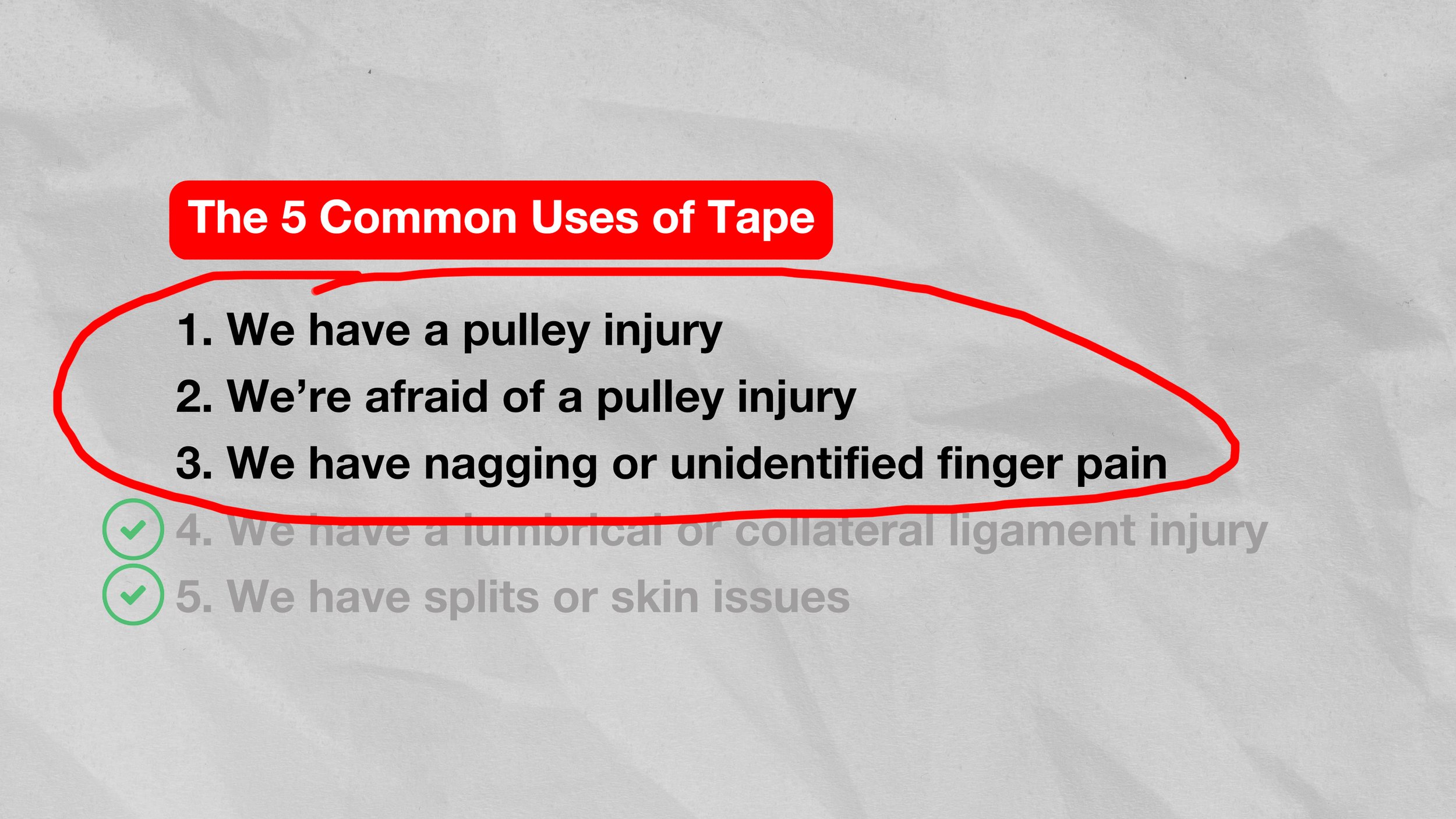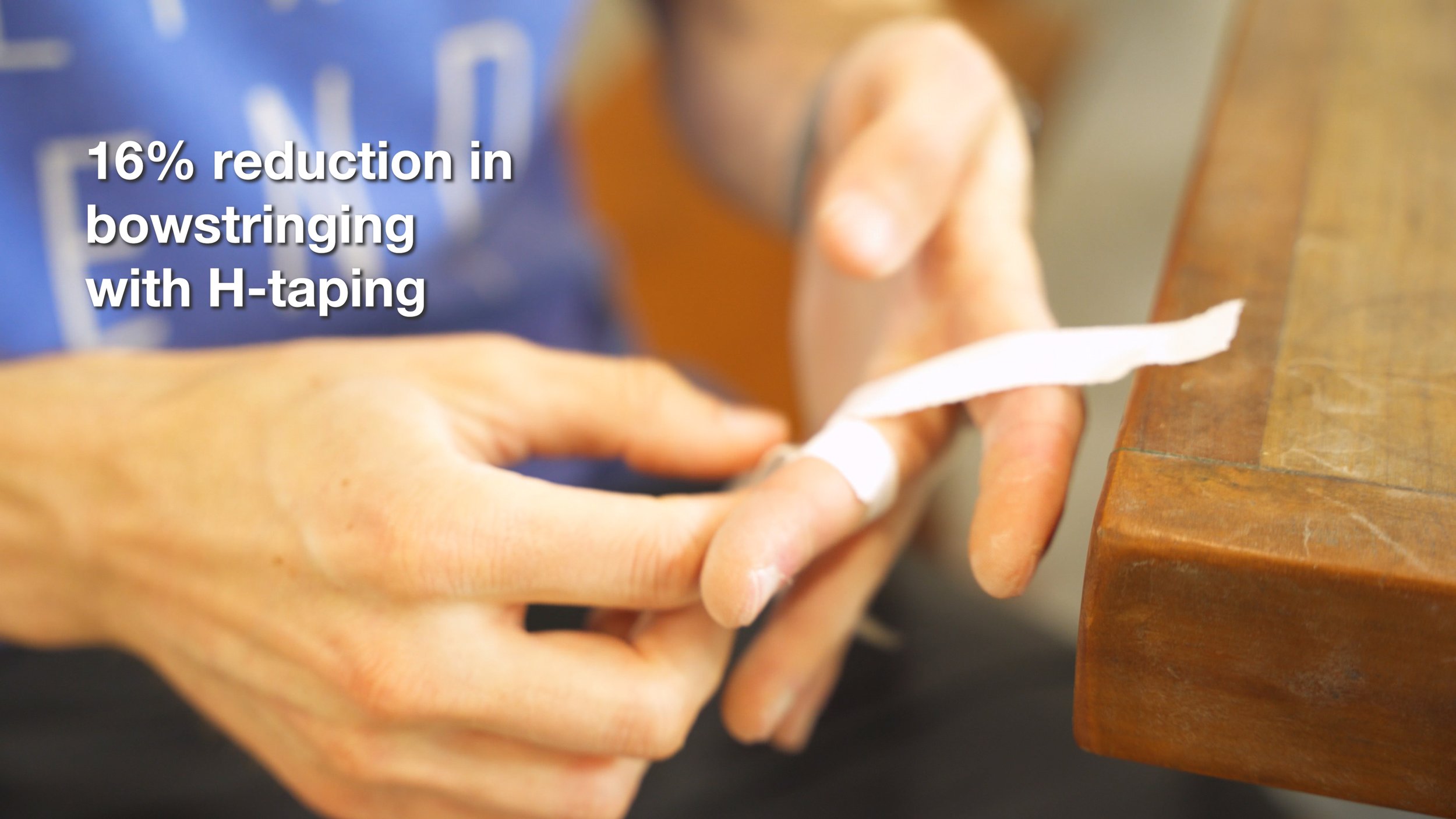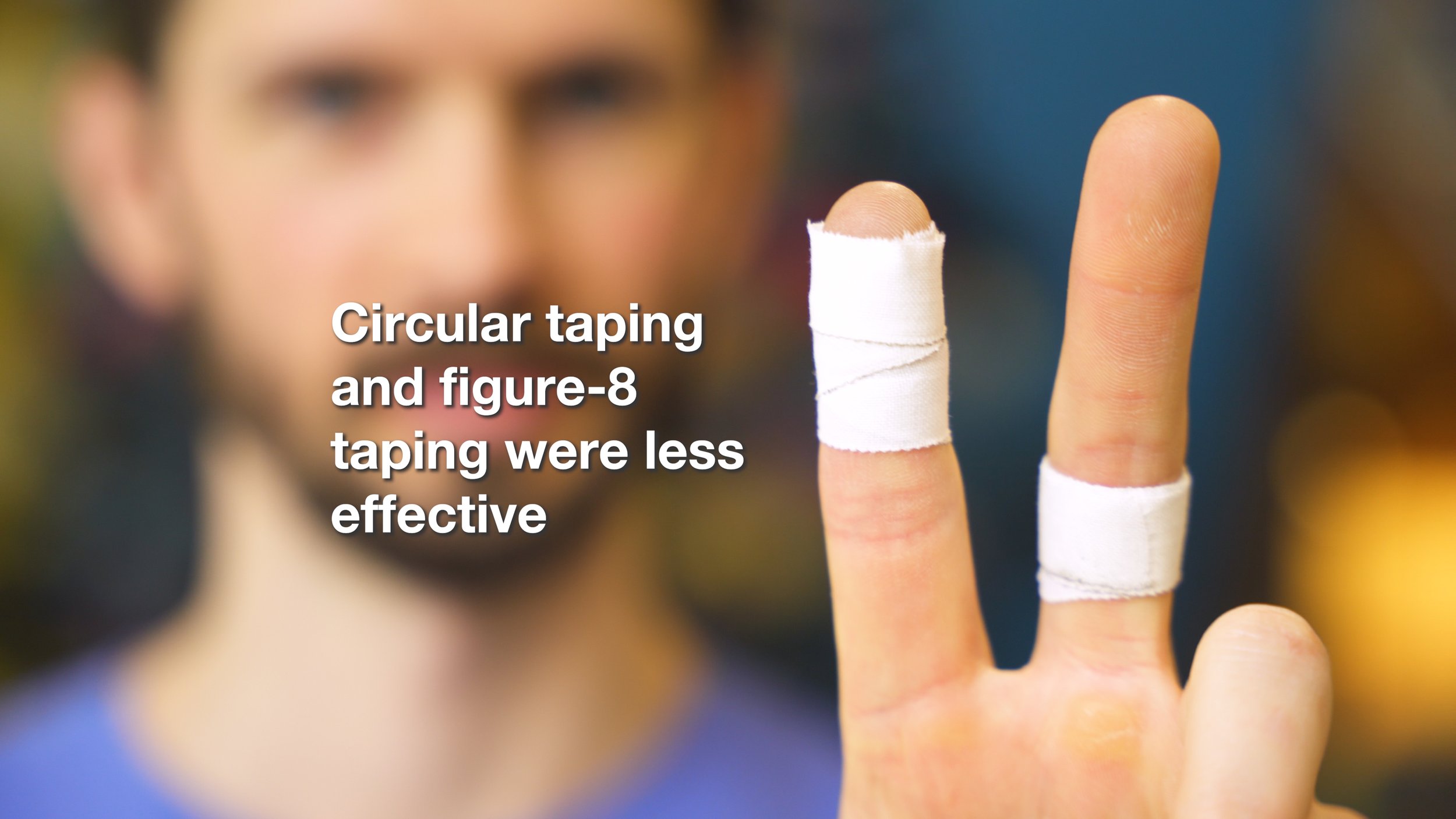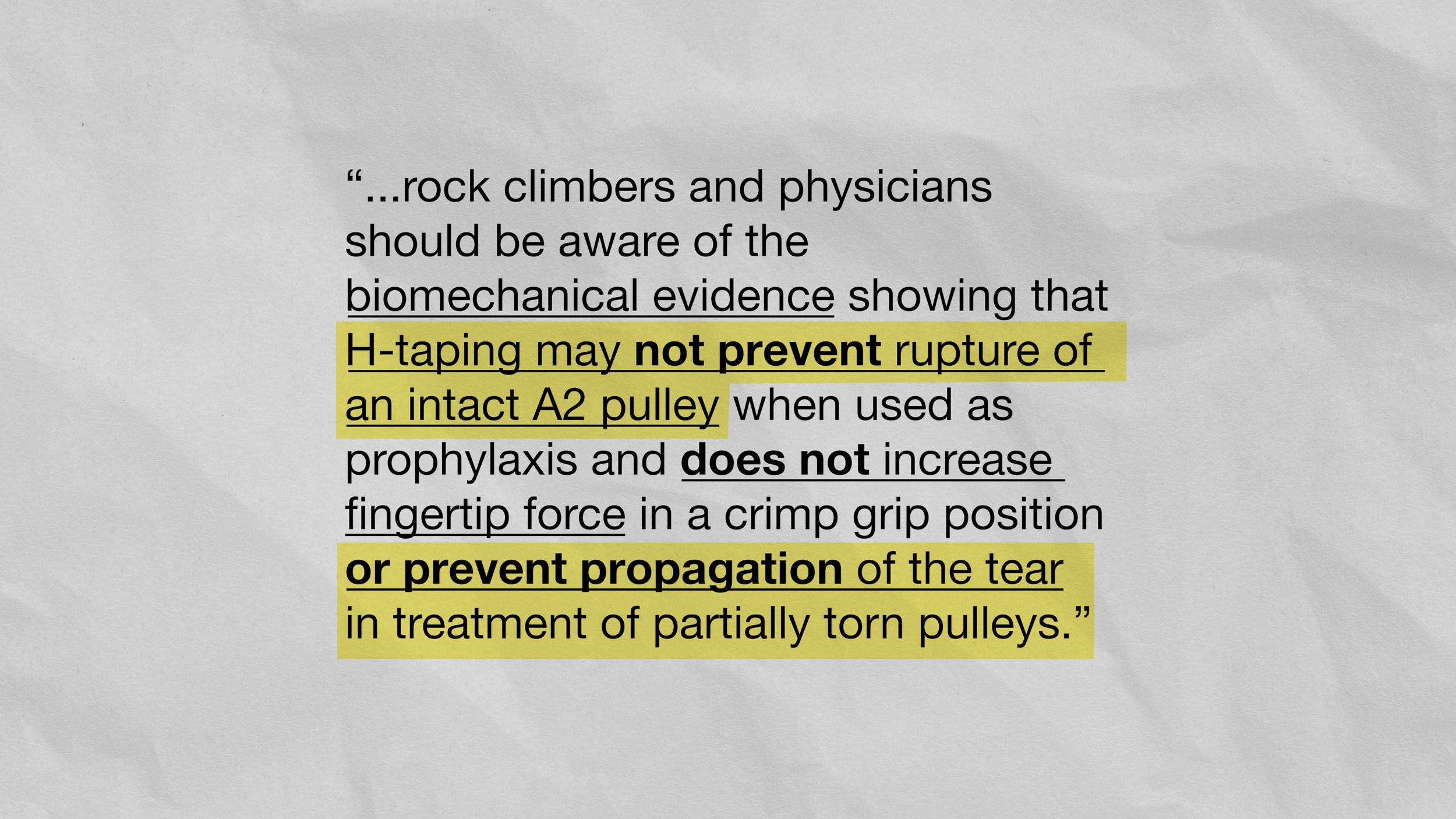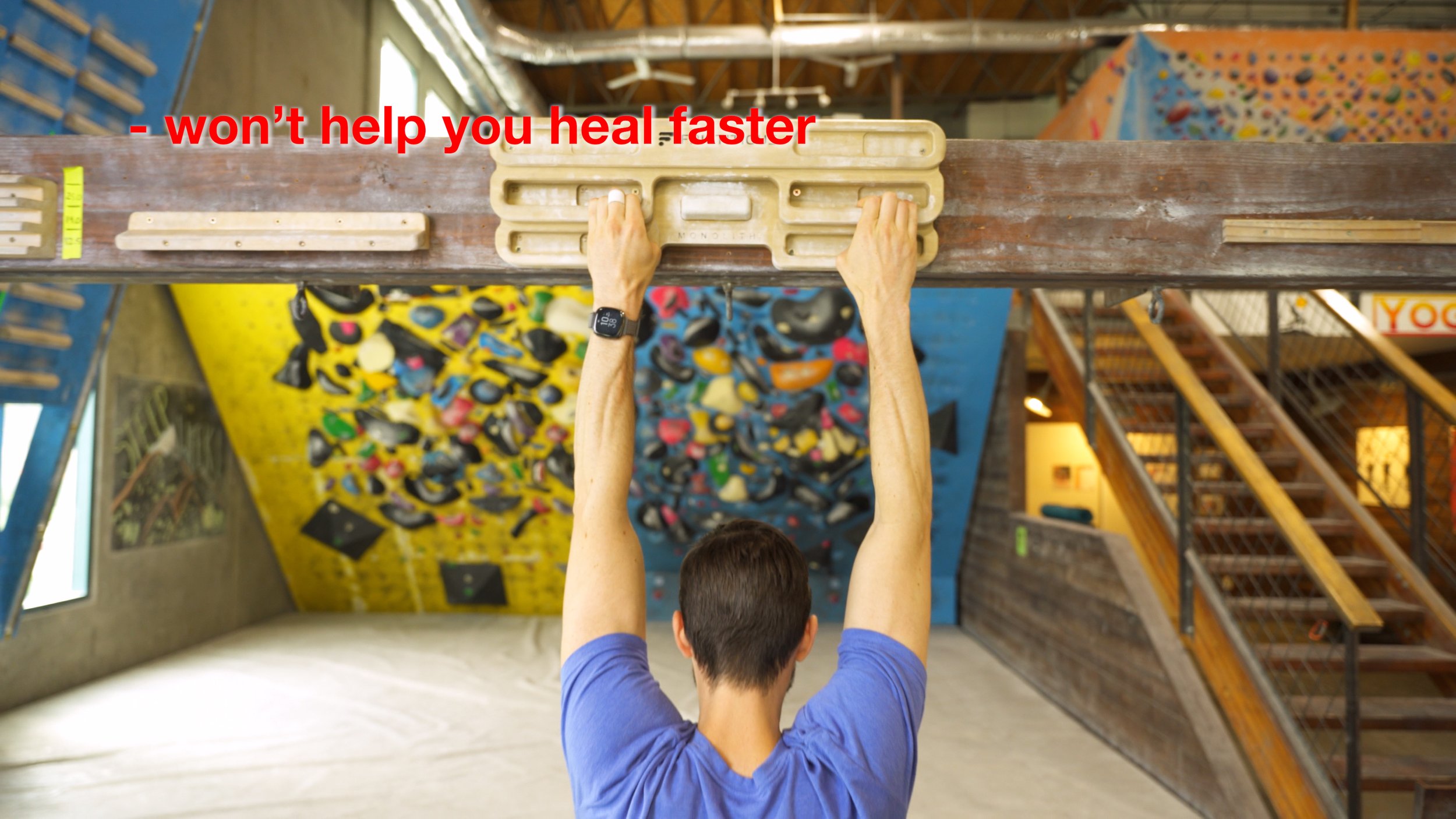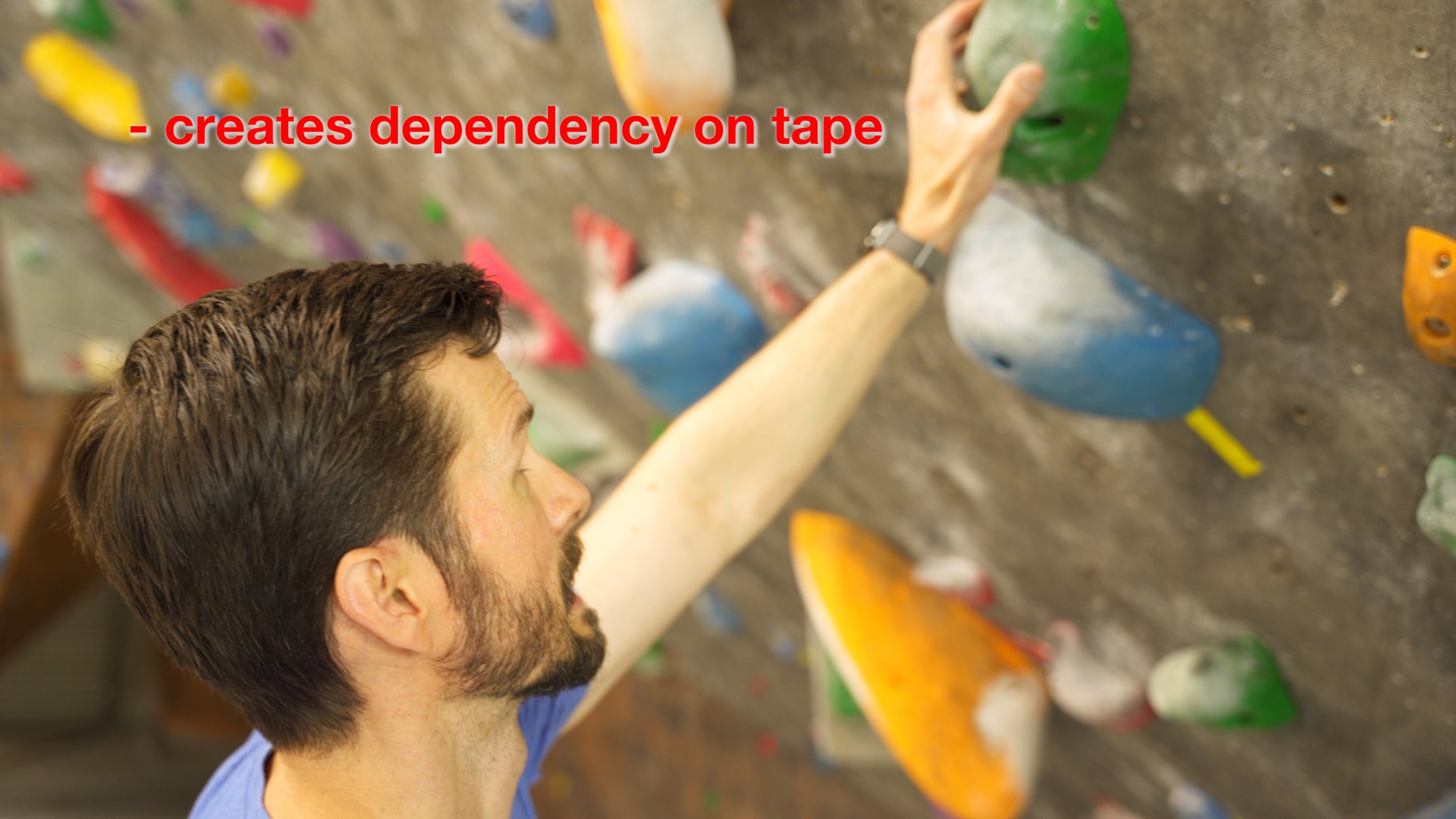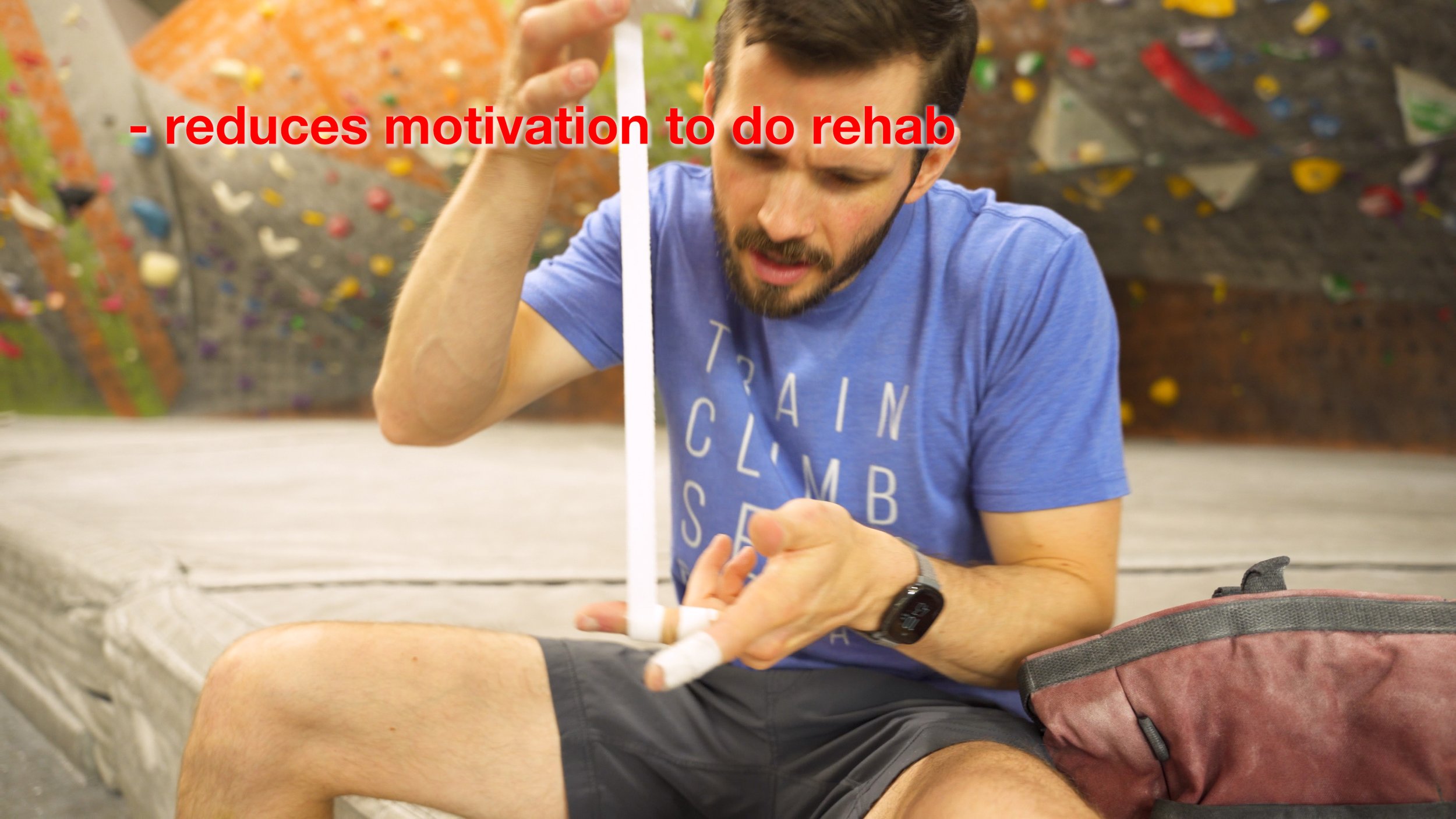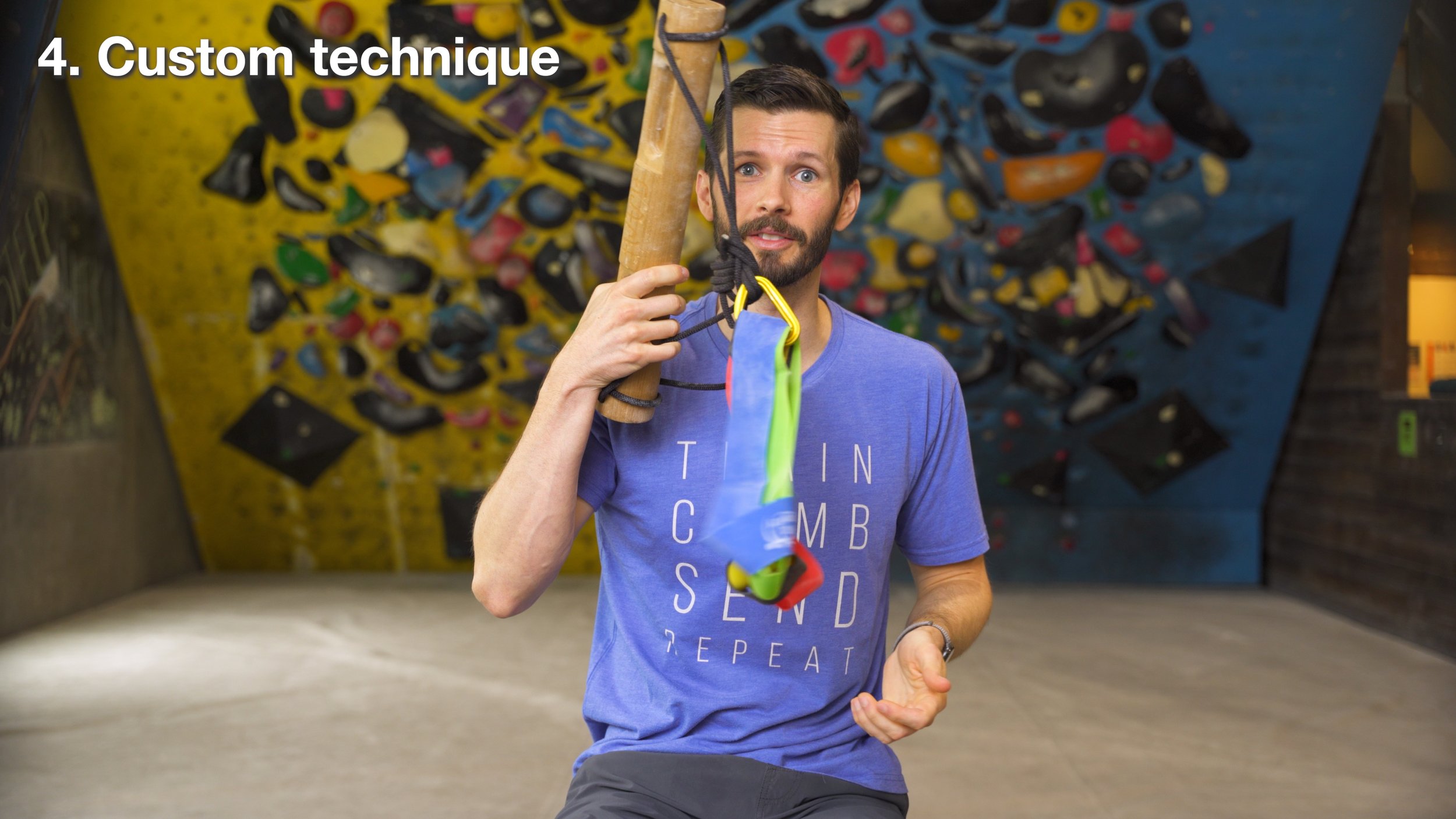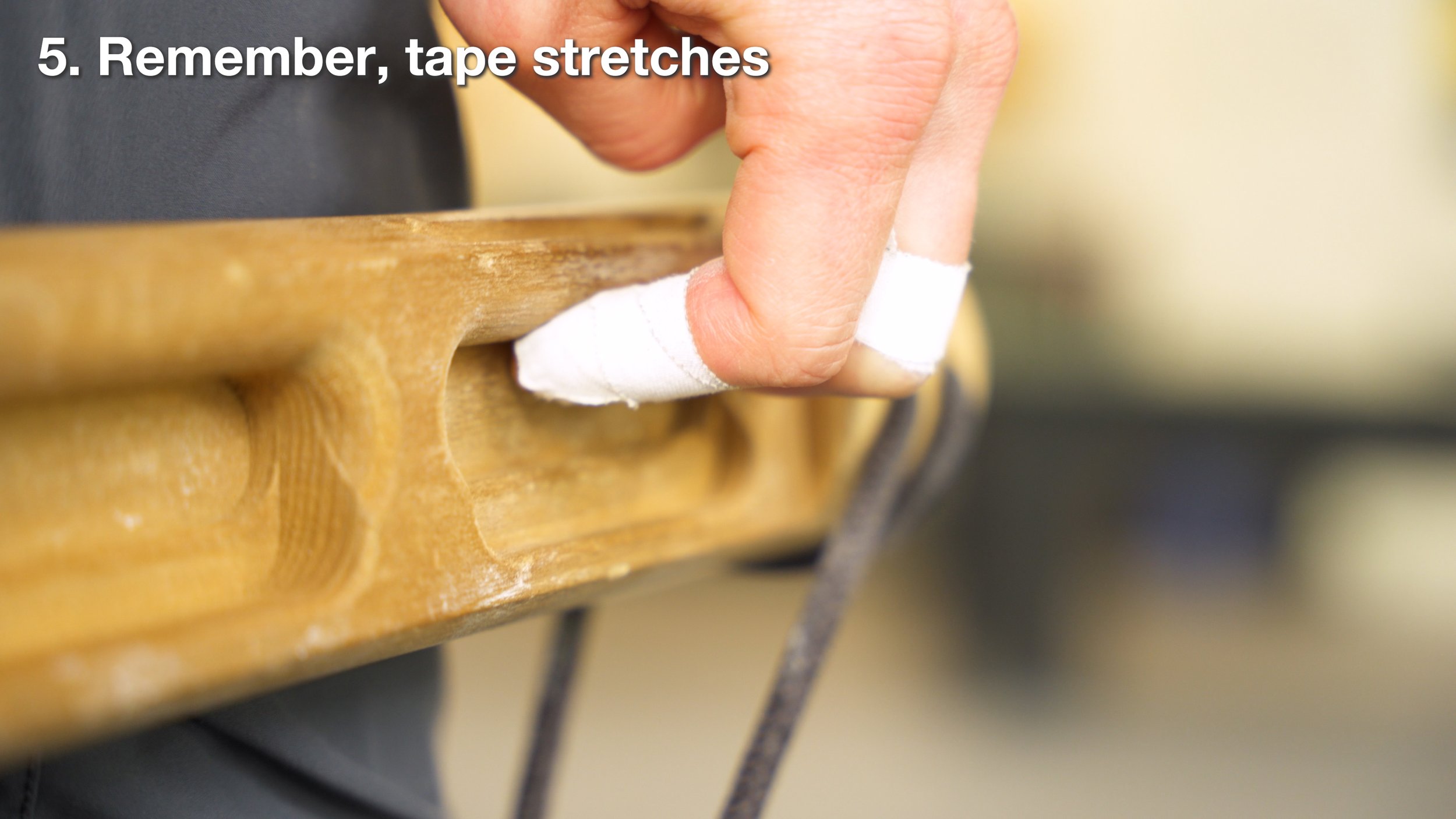Climbers Deserve the Truth About Taping (THE ACTUAL EVIDENCE)
Hooper’s Beta Ep. 115
INTRODUCTION
Based on the scientific research and what I see in my own practice, I’ve come to believe many climbers are using tape incorrectly. Or, more accurately, we’re using it in a way that doesn’t actually help us; it may even be working against us. So in this video, I’d like to cover the story of how taping became so misunderstood, what the research actually says versus what I think about it, how to use tape “properly,” and an alternative to tape that might actually be better for some people.
USE CASES
So, in general, there are about five scenarios where we might tape our fingers:
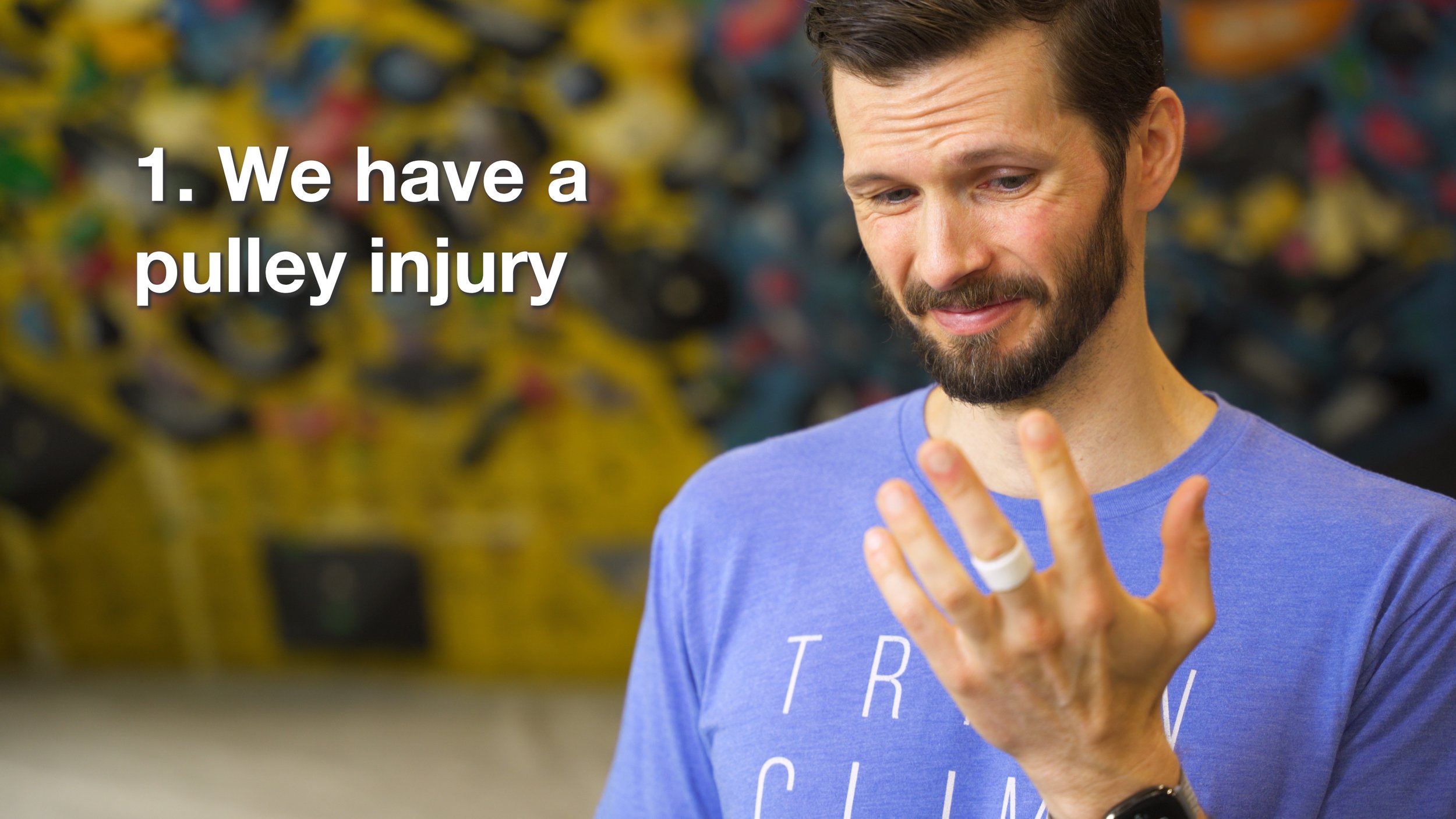
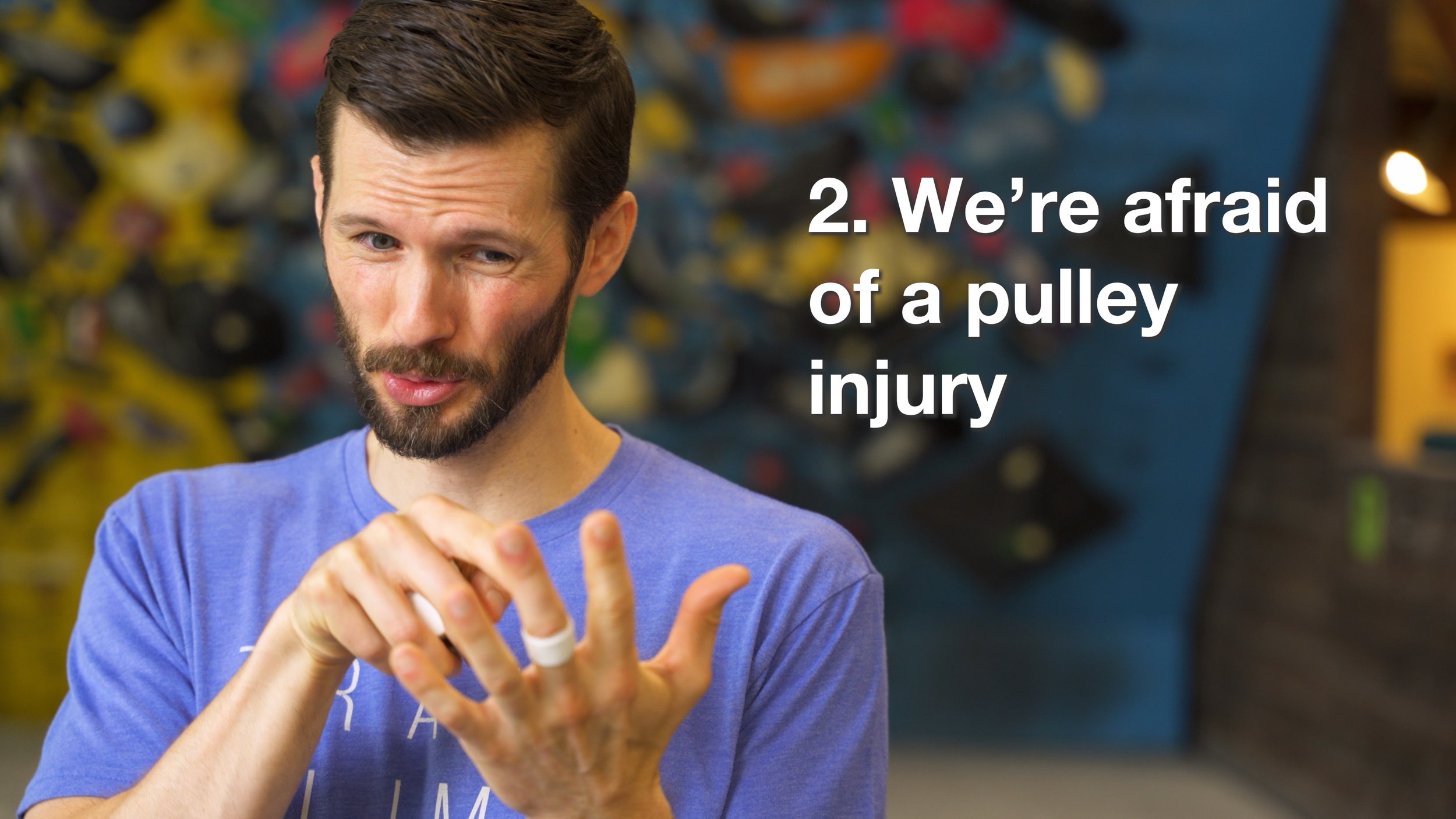

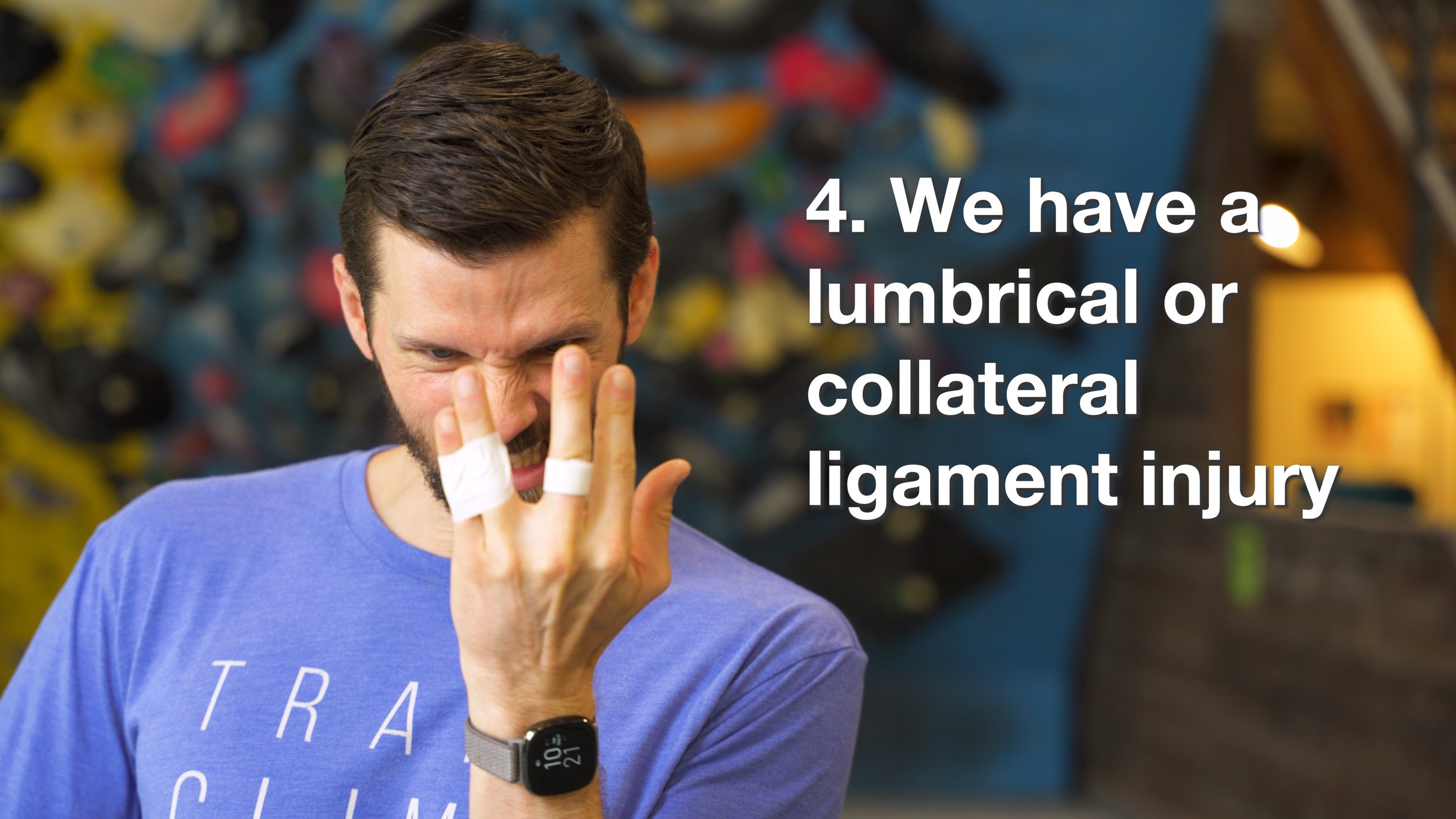

We have a pulley injury, so we want to support it with tape while it heals
We’re afraid of a pulley injury, and we hope tape will help prevent one
We have nagging or unidentified finger pain, and we hope tape will help in some way
We have a lumbrical or collateral ligament injury, and use buddy taping to help it heal
We have splits or skin issues
We can ignore reason five because that one is fine. Reason four is also totally valid, so we can check that one off too.
Reasons one through three, though… that’s where things get a little tricky, because some of the evidence is lacking or even against the use of taping. But most people don’t seem to know that, so how did we get to this point?
GOLDEN AGE OF TAPING
I would argue that the real boom in taping happened… sort of by accident. And unfortunately, sort of due to misinterpretation or misunderstanding of data and research.
In 2007, Schőffl et al published a study about the effects of finger taping [1]. They found that on fingers with A2 and/or A3 pulley injuries, a specific method of taping called H-taping caused a 16% reduction in bowstringing. Bowstringing is when the flexor tendon pulls away from the bone. They also found a 13% increase in crimp strength. (Note that the two other types of taping they tested were less effective.
So, suddenly, we have scientific evidence saying that taping could help with pulley injury rehab. The result? Taping gets talked about… a lot. An internet search for H-taping results in 1.5 million articles [2]. Tape becomes the hallmark of climbers with finger pain, often regardless of what the actual cause is. Tape becomes most climbers’ first method of treatment. Some people are even recommending H-taping as a way to prevent pulley injuries!
But wait, this is getting blown way out of proportion. I mean, this is just one study about one type of injury. I think it’s time for a sanity check.
RESEARCH REALITY CHECK
There are three key pieces of evidence that tend to get left out of the taping discussion.
First, in the Schőffl study, the researchers measured injured and healthy fingers. They ultimately concluded:
[1]
So they’re saying that in healthy fingers, tape will not increase the strength of our pulleys. Okay, but there’s more.
Seven years before all this, a completely different study found that the amount of force tape could absorb on a finger was extremely limited [3]. Consequently, the more force the researchers applied to the A2 pulley, the less helpful the tape became. They also noted that pain at the pulleys can stem from “microtrauma or chronic overstrain,” which is not necessarily alleviated by reducing bowstringing with tape.
Overall, these observations led them to conclude that “
So even though the design of this study was completely different from the Schőffl study, they came to a similar conclusion that tape won’t prevent pulley injuries. In fact they think it’s unlikely to reduce much load on the pulley at all. But there’s one more study we’re leaving out.
In 2022 Salas et al. published a study on the effects of taping on 112 cadaver fingers. In the end, they concluded:
[2]
So, in reality, for partial pulley tears and milder strains, the research says taping does not absorb enough force to be helpful. If you try to wrap the tape tighter to combat this, you’ll quickly lose mobility and blood flow. And if your pulleys are currently intact, current evidence says taping will do nothing to prevent an injury and will not allow you to crimp harder.
So is there any point to taping, then?
MY PERSPECTIVE AS A CLIMBING PT
In my opinion, tape has some specific pros and cons. Let’s talk about bowstringing first.
Bowstringing
We know that, when placed correctly (more on that in the next section), tape will help reduce bowstringing in fingers with pulley injuries. Reducing bowstringing lessens the angle of the tendon at the pulleys, so in theory, this should reduce irritation during day-to-day activities and rehab exercises.
In the studies we looked at, the researchers tend to conclude that this is only applicable to severe pulley injuries, like a full rupture. This is where I disagree with them; I don’t think they provide enough data to make that conclusion with confidence. In my opinion, there’s still a possibility that reducing bowstringing with tape could be helpful for partial tears as well. However, for milder pulley injuries, tape does not appear to do anything helpful biomechanically speaking. And if you’ve had past pulley injuries that are now healed, tape will not protect you -- in fact, it might work against you.
Mentality
The psychological aspect of taping should not be overlooked, as this can have a powerful influence on us. It may have even been the cause of the 13% increase in crimp strength in the Schőffl study, with the participants noting they felt “exceptionally well protected.”
Is it a good thing or a bad thing to be able to try harder because you “feel” protected? In my experience, it’s a good thing to reduce excessive fear surrounding an injury. Fear causes stress and sometimes hypersensitivity. Beyond that, however, I think tape quickly becomes a crutch for climbers. Being able to try harder because of tape won’t help you heal faster. Plus, climbers often become afraid to climb without tape. Many climbers don’t actually rehab or retrain their injuries fully because they become so reliant on the safe feeling of tape. If this sounds like you, I recommend you break this habit and get real about rehab. You don’t want to become that climber who’s had to tape up their fingers every session for the last three years.
THE RIGHT WAY TO TAPE
If you are going to use tape, there are a couple of evidence-based methods that I recommend.
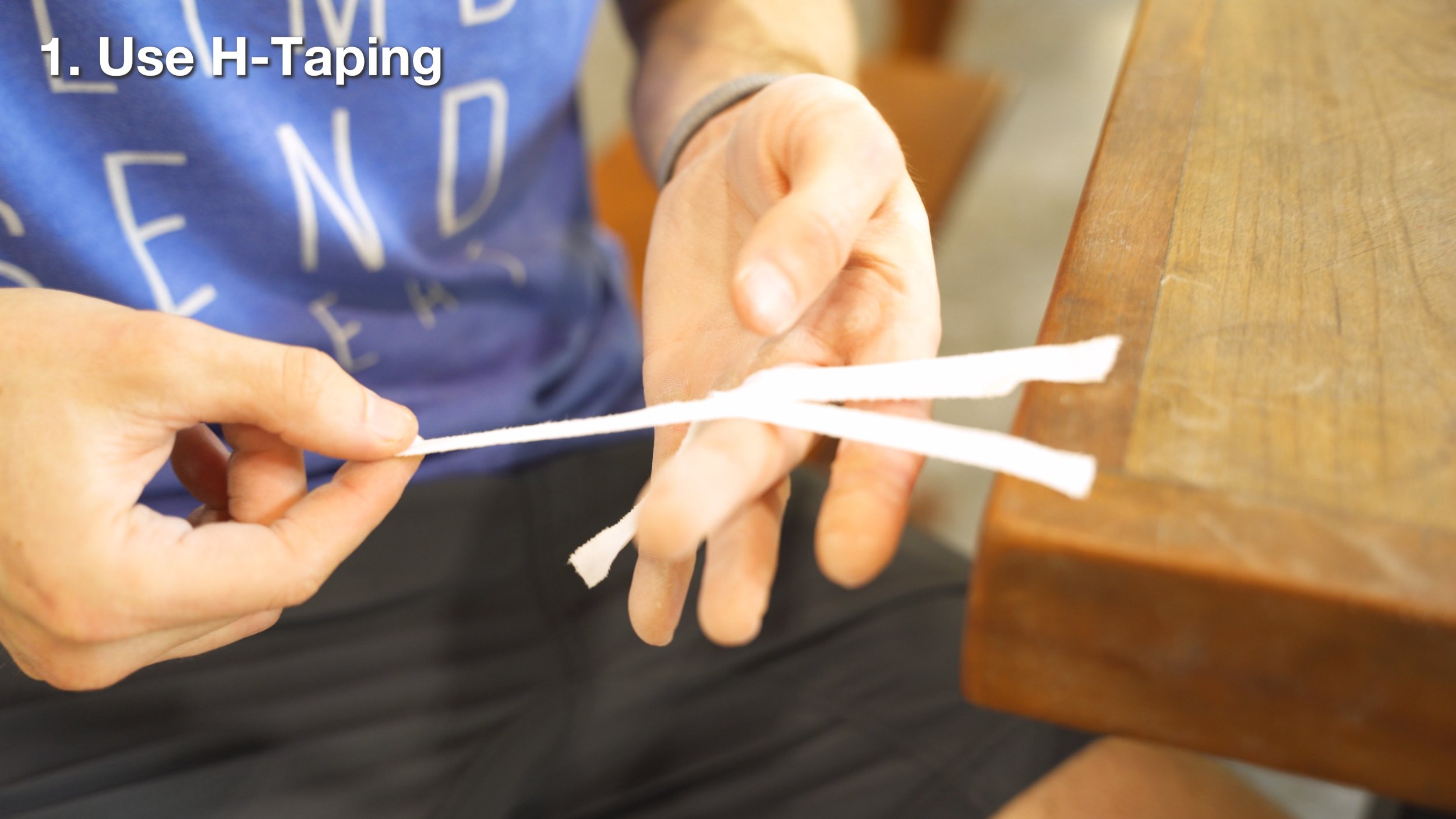
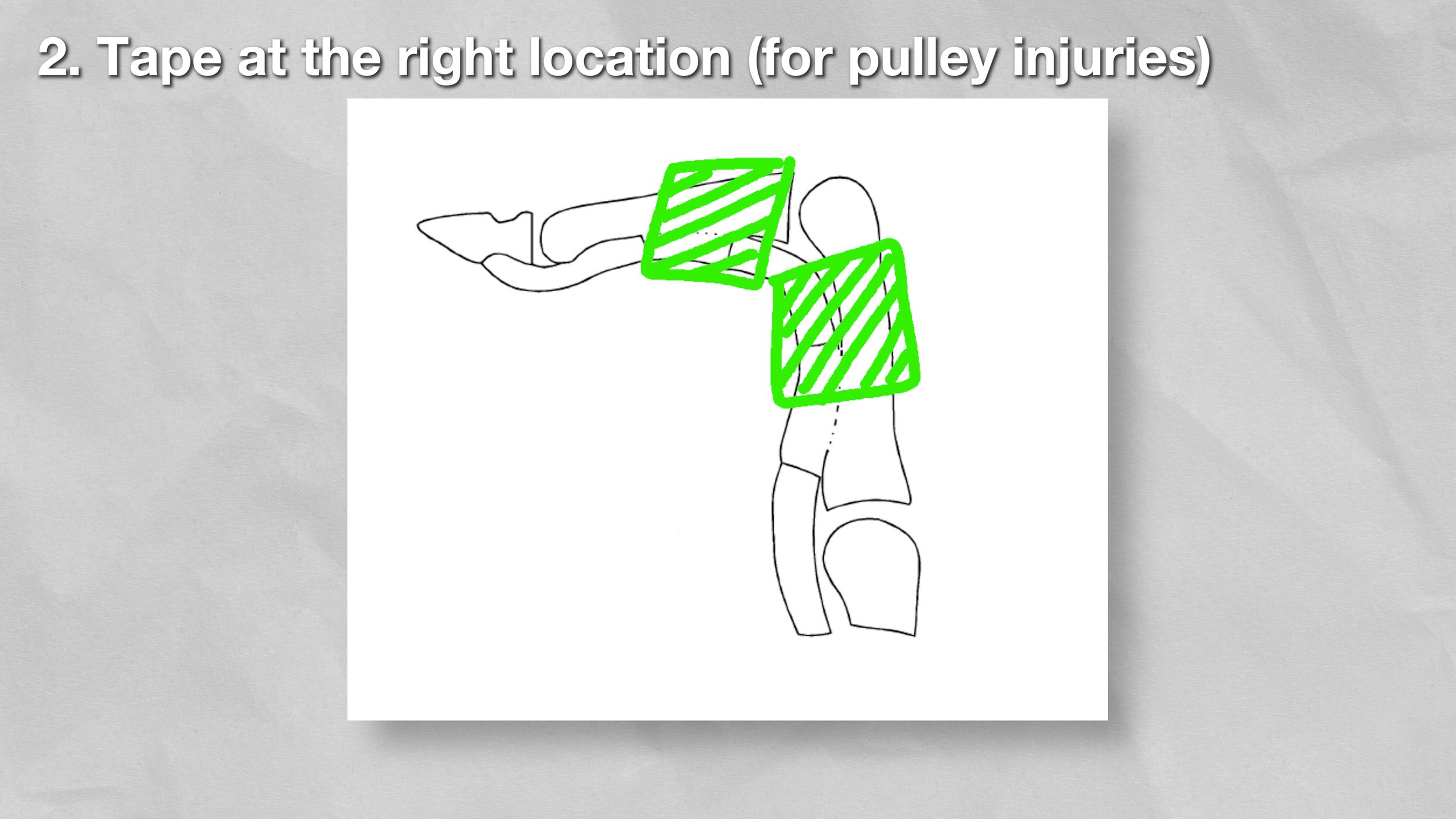
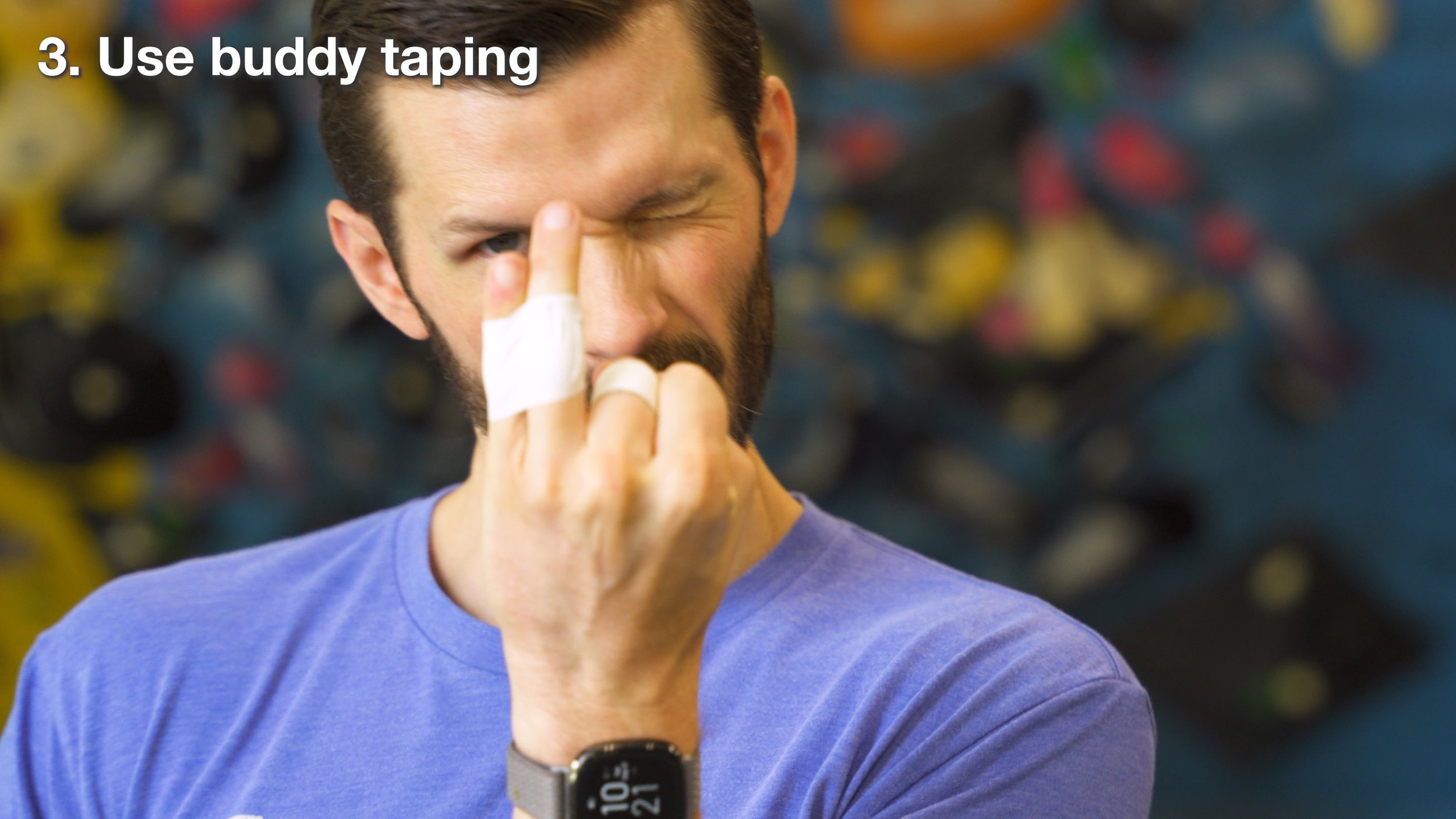
Use H-taping. Based on the research, this appears to be the most effective form of taping, as it provides mechanical support in the right regions of the A2 and A4 pulleys.
If you hate H-taping, put your tape at the distal end of your proximal phalanx or proximal end of the middle phalanx, depending on your injury.
For lumbrical or collateral ligament injuries, use buddy taping to help prevent the tissues from getting aggravated during day-to-day activities and climbing. [4]
For other types of finger injuries… I recommend this custom technique that I’ve come up with myself. [Instead of taping up, Jason unwraps all the tape from his finger, throws it away, and does a rehab exercise.] Tada! Rehab activities!
Bear in mind that tape stretches. If you’re exercising with tape on, it will not maintain its holding force forever, which is risky if you’re pulling harder than you normally would because you think the tape is supporting you. The Schőffl study actually recommends you replace tape after every route, but that sounds incredibly impractical.
CONCLUSION
Remember when I said I had an alternative to taping that might actually be better? For severe pulley injuries, I actually recommend using a splint instead. Splints provide rigid support with no stretching while also allowing full blood flow. They’re also less annoying to take on and off and less wasteful. For the best fit, you can get a custom-made splint from a hand therapist, but you can also make your own by following this great tutorial by Dr. Jared Vagy: Pulley Protection Splint… Though we’d appreciate it if you subscribed before you leave :).
Until next time: train, climb, send, repeat!
REFERENCES
Schoffl I, Einwag F, Strecker W, Hennig F, Schoffl V. Impact of taping after finger flexor tendon pulley ruptures in rock climbers. J Appl Biomech. 2007;23(1):52-62. doi:10.1123/jab.23.1.52 [1]
Salas C, McIver ND, Telis A, et al. A Biomechanical Analysis of the H-Taping Method Used by Rock Climbers as Prophylactic or Stabilizing Fixation of Partial A2 Pulley Tears [published online ahead of print, 2022 Jul 20]. J Hand Surg Am. 2022;S0363-5023(22)00257-X. doi:10.1016/j.jhsa.2022.05.002 [2]
Schweizer A. Biomechanical effectiveness of taping the A2 pulley in rock climbers. J Hand Surg Br. 2000;25(1):102-107. doi:10.1054/jhsb.1999.0335 [3]
Roh YH, Koh YD, Go JY, Noh JH, Gong HS, Baek GH. Factors influencing functional outcome of proximal interphalangeal joint collateral ligament injury when treated with buddy strapping and exercise. J Hand Ther. 2018;31(3):295-300. doi:10.1016/j.jht.2017.02.010 [4]
DISCLAIMER
As always, exercises are to be performed assuming your own risk and should not be done if you feel you are at risk for injury. See a medical professional if you have concerns before starting new exercises.
Written and Presented by Jason Hooper, PT, DPT, OCS, SCS, CAFS
IG: @hoopersbetaofficial
Filming and Editing by Emile Modesitt
www.emilemodesitt.com
